
Transcription
SCHOOL OF RADIOLOGIC TECHNOLOGYPROGRAM BULLETIN2012 - 2013Founded 1931Madison, WISRT Program Bulletin 2012-2013
TABLE OF CONTENTSCONTACT INFORMATION .3ACCREDITATION .3FACULTY .3INTRODUCTION .4MISSION STATEMENT .5PROGRAM GOALS & OUTCOMES ASSESSMENT .6THE ROLE OF THE RADIOLOGIC TECHNOLOGIST.7PROGRAM DESCRIPTION .8CURRICULUM WITH COURSE DESCRIPTIONS . 10COURSE SEQUENCE . 15ACADEMIC YEAR CALENDAR – KEY DATES . 16ADMISSION POLICIES . 17THE IDEAL CANDIDATE . 18MINIMUM EDUCATIONAL REQUIREMENTS . 19REQUIRED POST-SECONDARY GENERAL EDUCATION COURSEWORK . 20APPLICATION REQUIREMENTS . 21APPLICATION PROCESS . 22APPLICATION CHECKLIST . 23APPLICATION EVALUATION SCORING . 25ADMISSION TIMELINE . 25FINANCIAL INFORMATION . 26APPLICATION FEE . 26ENROLLMENT FEE . 26TUITION . 26REFUND POLICY . 27CLINICAL LAB FEE . 28TEXTBOOKS . 28HOUSING . 29MEALS . 29ATTIRE . 29HEALTH INSURANCE . 29FINANCIAL AID . 30STUDENT COMMISSION . 30STUDENT BODY . 30ADVISORY COMMITTEE . 30ACADEMIC POLICIES . 31BSRT DEGREE . 31ACADEMIC STANDARDS . 31ACADEMIC AND CLINICAL HOURS . 31HOLIDAYS AND VACATIONS . 32CORE COMPETENCIES . 32ORIENTATION . 33HEALTH REQUIREMENTS . 33STUDENT PREGNANCY GUIDELINES . 34CLINICAL OBLIGATIONS . 35CLINICAL ROTATIONS. 36GRADING SYSTEM . 37TRANSFER OF CREDIT . 37GRADUATION REQUIREMENTS . 38STUDENT RECORDS AND RELEASE OF INFORMATION . 38PROTECTED PATIENT HEALTH INFORMATION (PHI) . 39GENERAL INFORMATION . 40UW-MADISON CAMPUS . 40CITY OF MADISON . 41SRT Program Bulletin 2012-2013
UWHC School of Radiologic Technology does not discriminate on the basis of race, gender,sexual orientation, handicap, religion, age, national origin or veteran status.CONTACT INFORMATIONUWHC School of Radiologic Technology610 N. Whitney Way, Suite 440Madison, WI 53705-2700PH: (608) 263-8338FAX: (608) DITATIONJoint Review Committee on Education in Radiologic Technology (JRCERT)20 N. Wacker Drive, Suite 2850Chicago, IL 60606-3182PH: (312) 704-5300FAX: (312) 704-5304http://www.jrcert.org or mail@jrcert.orgFACULTYKaren L. Tvedten, M.Ed., R.T.(R) – Program DirectorChristopher Lakner, B.A., R.T.(R) – Clinical Education CoordinatorMary Legler, M.Ed., R.T.(R) – Clinical InstructorLisa Oelke, B.A., R.T.(R)(MR) – Clinical InstructorDaniel Vander Meulen, B.A., R.T.(R) – Clinical InstructorAll policies, procedures, tuition and fees are subject to change by written notice of the ProgramDirector, Clinical Education Coordinator, and Clinical Instructors.Questions or concerns regarding any of the policies/procedures published in this bulletin can bedirected to the School Faculty or the Joint Review Committee on Education in RadiologicTechnology.SRT Program Bulletin 2012 - 2013
INTRODUCTIONUniversity of Wisconsin Hospital and Clinics (UWHC) together with University of WisconsinSchool of Medicine and Public Health (UWSMPH), University of Wisconsin MedicalFoundation (UWMF), and University of Wisconsin Paul P. Carbone Comprehensive CancerCenter (UWCCC) comprise UW Health, the academic medical center and comprehensive healthsystem for the University of Wisconsin - Madison. The state-of-the-art, American FamilyChildren’s Hospital (AFCH) is a premier pediatric medical and surgical center included as partof UWHC. In addition, University of Wisconsin School of Pharmacy, and University ofWisconsin School of Nursing maintain academic relationships with the UW Health partnership.UW Hospital and Clinics has long been recognized as a national leader in many specializedfields of medicine, medical research, and health science; including cancer treatment, pediatrics,ophthalmology, surgical specialties, and organ transplantation. UWHC offers six intensive careunits and is the designated adult and pediatric Level One trauma center for south-centralWisconsin. Over 800 physician specialists and faculty serve on the medical staff providing healthcare to patients from throughout Wisconsin, the United States, and many foreign countries. Inaddition to UW Hospital and Clinics, UW Health encompasses over 80 outpatient clinics andseven satellite locations.Health care services at UWHC are innovative, comprehensive, and wide-ranging. UW Hospitaland Clinics offers the latest available technology and treatment methods. Service focuses onsafety, excellence, and quality. UWHC is recognized by numerous influential organizations andmedia institutions as one of the most prominent, progressive, and quality conscious medicalcenters in the country. UWHC is fully accredited by The Joint Commission and has beenawarded that nation-wide accrediting agency’s Gold Seal of Approval in recognition of itscommitment to providing high-quality, safe medical care.UW Hospital and Clinics’ radiology department offers services in general diagnostic andfluoroscopic radiology, diagnostic ultrasound, computed tomography, mammography,neuroradiology, angiography, interventional radiology, nuclear medicine, positron emissiontomography, and magnetic resonance imaging. The radiology department performs thousands ofprocedures annually. In addition to the School of Radiologic Technology, the departmentsupports the School of Diagnostic Medical Sonography and Echocardiography for those seekingeducation to pursue careers in the medical imaging sciences.Radiotherapy, a division of the UW Carbone Comprehensive Cancer Center (UWCCC), islocated within UWHC. In addition to treating hundreds of patients per day with the most currentmethods for cancer treatment, the radiotherapy division serves as a clinical education site forstudents of radiation therapy technology.The facilities offered by UW Hospital and Clinics provide students with a well-roundededucation in all aspects of medical imaging sciences. Radiologic Technology provides manyopportunities and is a rewarding career choice with a secure employment outlook.SRT Program Bulletin 2012-20134
Mission StatementUWHC School of Radiologic Technology is dedicated to educating students in the art andscience of medical radiography. Our mission is to instill the knowledge, behaviors, and valuesrequired of competent entry-level radiographers. In fulfillment of our mission, students/graduatesof the program will achieve the following goals: Learn and understand the concepts related to the practice of radiography and be able toapply them competently in the clinical setting. Communicate effectively in both the clinical and classroom settings. Develop critical thinking and problem solving skills and apply them in the clinical andclassroom settings. Demonstrate professional development and growth through research assignments andexploration of alternate imaging modalities. The School will monitor assessment data indicating program effectiveness consistentwith JRCERT Standards. These measures are:o Employer satisfaction survey average of 3.5 on a 5.0 scale.o Graduate survey/program evaluation average of 3.5 on a 5.0 scale.o Program completion rate of 80%.o Job placement rate within 6 months of program completion that is 75%.o First attempt ARRT credentialing exam pass rate of 90%.The School’s mission is achieved when the graduate has successfully completed and achieved allprogram goals and outcomes. The mission, goals, and outcomes endorsed by UWHC School ofRadiologic Technology are evaluated annually. Members of the faculty, student body, radiologydepartment, hospital administration, and the School of Radiologic Technology AdvisoryCommittee participate in the evaluation process thereby serving as the program’s communities ofinterest.The mission of UWHC School of Radiologic Technology complements the mission of oursponsoring institution, UW Hospital and Clinics. The sponsor’s fourfold mission of; advancinghealth through service, scholarship, science, and social responsibility is an integral part of theUW Health vision to serve as “a national leader in health care, advancing the well-being of thepeople of Wisconsin and beyond”.As a part of the University of Wisconsin Hospitals and Clinics community, UWHC School ofRadiologic Technology students participate in the achievement of the mission and goals for boththe School of Radiologic Technology and its sponsoring institution: University of WisconsinHospitals and Clinics.SRT Program Bulletin 2012-20135
Program Goals & Outcomes AssessmentUWHC School of Radiologic Technology practices ongoing assessment of program goals andoutcomes in order to evaluate student learning and monitor program effectiveness. ProgramGoals define what the program intends to accomplish. Student Learning Outcomes represent thelevel of mastery intended for students to achieve. Assessment of outcomes utilizes quantitativemeasurement and data analysis that assures the program is meeting its goals.Program goals and outcomes are evaluated annually by the Faculty and Advisory Committee ofUWHC School of Radiologic Technology. Documentation of the assessment process ismaintained by the Program Director.PROGRAM GOALS1. Students will learn and understand the conceptsrelated to the practice of radiography and be able toapply them competently in the clinical settingSTUDENT LEARNING OUTCOMES 2. Students will communicate effectively in both theclinical and classroom settings. 3. Students will develop critical thinking and problemsolving skills and apply them in the clinical andclassroom settings 4. Students will demonstrate professional developmentand growth through research assignments andexploration of alternate imaging modalities Provide appropriate patient carePosition patients accurately to obtaindiagnostic imagesPractice radiation safety in accordance withcurrently accepted guidelinesDevelop a working knowledge of medicalterminologyResearch a peer reviewed journal article andgive an oral presentation on the findingsDemonstrate appropriate and professionalinteractions with patients, staff, and visitorsUnderstand the complexities of exposurefactor selection and demonstrate competencyin determining the correct exposure factors innon-routine situationsBecome proficient in evaluating images fordiagnostic qualityDemonstrate the ability to adapt to nonroutine clinical situationsPrepare an independent study research projectthat is eligible for competition at aprofessional society meetingExplore alternate imaging modalities duringelective clinical assignments5. The School will monitor assessment data indicatingprogram effectiveness consistent with JRCERTStandards.oooooStudents will graduate from the programGraduates will exhibit a high degree ofsatisfaction with the programEmployers will exhibit a high degree ofsatisfaction with graduates of the programGraduates will successfully pass the ARRTexaminationGraduates will find employment within sixmonths of graduationSRT Program Bulletin 2012-2013 Program completion rate 80%Graduate surveys/program evaluations of 3.5on a 5.0 scaleEmployer satisfaction surveys of 3.5 on a 5.0scale 90% pass rate on ARRT certification examfor first time examineesGraduate job placement of 75% within sixmonths of graduation6
The Role of the Radiologic TechnologistThe Radiologic Technologist (Radiograher) is a member of an allied health profession dedicatedto preserving health, diagnosing, and curing disease. Under the direction of a Radiologist (amedical physician specializing in the use of radiant energy for the diagnosis and treatment of disease), theRadiologic Technologist (often referred to as a Radiographer) uses various forms of ionizing radiationto either detect and/or treat injury and disease.The Radiologic Technologist’s duties include: Operating equipment used to produce medical images Caring for the ill and injured Positioning patients for diagnostic examinations Calculating proper exposure factors Processing images and assessing the diagnostic quality of the radiographs. Assisting the radiologist with fluoroscopic examinations, treatments with ionizingradiation, diagnostic testing, angiographic procedures, computed tomography, magneticresonance imaging, mammography, and the use of radioactive isotopesRadiologic Technologists must be able to routinely: Lift more than 50 pounds Work with the arms above the head Push and pull Kneel or squat Work standing up Perform procedures on patients with health problems Assist patients on and off examination tables, wheelchairs, or stretchers Communicate effectively with patients and staff Accurately align patient, x-ray equipment, and image receptors Organize and accurately perform the individual steps of an x-ray examination in sequence Work nighttime, weekend, and holiday hoursRadiologic Technologists must be constantly aware of the following occupational hazards: Exposure to communicable and infectious diseases Exposure to low levels of ionizing radiation Exposure to chemicals used in the processing of x-ray film Exposure to latex in protective gloves Exposure to blood, body fluids, and biomedical hazardsQualified Radiologic Technologists are needed in hospitals, clinics, physicians’ offices, industry,and public health. Teachers and managers in radiologic technology are also in demand.Radiologic technology offers the individual a professional career in allied health with economicsecurity and opportunities for advancement.SRT Program Bulletin 2012-20137
Program DescriptionUWHC School of Radiologic Technology is a 24-month program offering professional study inthe art and science of medical radiography. The school holds formal affiliation agreements withUW-Milwaukee College of Health Sciences and Marian University of Fond du Lac to provideprofessional study to BSRT candidates from those institutions.The curriculum is six semesters long consisting of four traditional semesters and two summersessions. The academic year runs from September through August. Students participate in thedidactic and clinical portions of the program simultaneously. Combined didactic and clinicalhours total 40 hours per week. Completion of the program will lead to eligibility to write thecertification examination in Radiography of the American Registry of Radiologic Technologists(ARRT). Graduates are awarded a certificate in radiography from UW Hospital & Clinics. Thebaccalaureate degree is conferred by the institution where the student completed pre-professionalstudy.UWHC School of Radiologic Technology is administered through the UW School of Medicineand Public Health Department of Radiology and UW Hospital and Clinics. The curriculumcovers all aspects of radiologic technology and adheres to the Standards for an AccreditedEducational Program in Radiologic Sciences (2011) as required by The Joint ReviewCommittee on Education in Radiologic Technology (JRCERT).Educational facilities located within UWHC and the adjacent Health Sciences Learning Center(HSLC) include an audio-visual department that offers videotape, slide projection, and computerequipment for self-instruction. The Ebling Library, located in the HSLC is available for use byfaculty and students. The HSLC has extensive reference resources, medical journals, books, andcomputer labs. UWHC School of Radiologic Technology has various teaching aids such asreference guides, periodicals, skeletons, anatomical models, x-ray tubes, videotapes, CD-ROMs,slides, and a teaching file of radiographic images.Academic classes are small and personalized, assuring individual assistance. They are conductedin classrooms located within UW Hospital and Clinics. Clinical demonstrations and laboratorypractice sessions are conducted at facilities within the radiology department at UWHC.Clinical education occurs at various JRCERT recognized clinical education centers locatedwithin Madison and the surrounding area. Clinical rotations expose students to all aspects ofdiagnostic radiography and related areas. The clinical education component of the program isbroad in scope and encompasses all imaging modalities. Students may opt to expand theirexperiences with additional clinical rotations scheduled on holidays, weekends, or nontraditional shifts. Optional elective clinical experiences in imaging modalities related toradiography are available in the following areas:Mammography – x-rays are used to perform diagnostic and screening examinations of thebreast.Computed Tomography (CT) – uses x-rays and computer technology to produce sectionalimages of the various body structures.SRT Program Bulletin 2012-20138
Magnetic Resonance Imaging (MRI) – uses radio frequency signals in high-energy magneticfields to produce computer-generated images of body structures.Angiography/Interventional Radiology – uses x-ray and digital imaging methods to assess andtreat conditions of the vascular, central nervous, biliary, and musculoskeletalsystems.Cardiovascular Technology – x-rays and digital imaging methods are used to produce imagesused in the evaluation of pathology associated with the heart and blood vessels, and performinterventional treatment of these conditions.Nuclear Medicine –uses radioactive materials to assess pathologic processes, treat disease, andevaluate physiologic function of the various organs and body systems.Radiation Oncology (Radiation Therapy) – uses the various forms of ionizing radiation in thetreatment of disease processes.Ultrasound – produces images of the internal body structures through the use of sound waves.SRT Program Bulletin 2012-20139
Curriculum with Course DescriptionsCourse credit is determined as follows:Academic Classes – 16 clock hours of instruction (50-60 min. class session) 1 creditClinical Courses – 48 hours of clinical instruction 1 creditJunior Year - Semester I – FallCLSCI 350: Introduction to Radiologic Sciences & Patient Care: An overview of theradiologic technology profession, imaging principles, equipment, patient care skills,pharmacology and contrast media, communications, cultural diversity, medical ethics, and thelegal issues pertinent to radiographers. 2 creditsCLSCI 351: Radiation Protection: Principles of radiation safety, detection, measurement andmonitoring relevant to radiologic technology. 2 creditsSRTIC 300: Medical Terminology: A self-study course in medical terminology. Students haveone semester to complete all assignments and pass the comprehensive final exam. Specialattention is paid to terms used in diagnostic radiology. 1 creditCLSCI 352: Radiographic Anatomy and Physiology I: A study of anatomic structures andphysiologic mechanisms pertinent to radiography. This course includes body structure, function,external landmarks and gross physiology. Correlation is provided through the courses inradiographic positioning and applied clinical radiography. Areas covered include: cell structureand function, integumentary, muscular, and skeletal systems.3 creditsCLSCI 353: Radiographic Exposure I: A study of the technical aspects involved in theproduction of diagnostic radiographs. Topics covered include the production of x-rays, scattercontrol, grids, beam restriction, and an analysis of image quality factors. 3 creditsCLSCI 354: Radiographic Procedures I: Theoretical and practical principles of patientpositioning in radiology to demonstrate the chest, abdomen, and upper extremities. Specialattention is paid to assessing radiographs for diagnostic quality and developing critical thinkingskills. Laboratory practice is included in this course. 2 creditsCLSCI 355: Radiography Clinical Practicum I: The student will participate in radiographicprocedures and demonstrate competency at assigned Clinical Education Centers. Performanceobjectives and cognitive goals focus on the basic skill areas of radiography. 65 requiredcompetencies must be completed during the two years of clinical education. Clinical experiencesfor Practicum I average approximately 20 hours per week. 4 creditsSRT Program Bulletin 2012-201310
Junior Year - Semester II – SpringCLSCI 360: Radiation Biology: Fundamental principles of the effects of ionizing radiation onbiologic systems from the cellular level to the entire human organism. Examines somatic longterm, somatic short term, and genetic effects of radiation exposure on biologic systems. 2 creditsCLSCI 361: Radiographic Anatomy and Physiology II: A study of anatomic and physiologicstructures of the human body pertinent to radiography. Body systems covered include thenervous system, special senses, endocrine, respiratory, digestive and urinary systems.3 creditsCLSCI 362: Radiographic Exposure II: Continues the study of radiographic image productionfrom Semester I. Topics include film-screen image receptors, computed and digital radiography,processing, chemicals, and sensitometry. 2 creditsCLSCI 363: Radiographic Procedures II: Theoretical and practical principles of patientpositioning in radiology to demonstrate the lower extremities, spine, digestive and urinarysystems. Special attention is paid to evaluating radiographs for diagnostic quality and to enhancecritical thinking skills. Laboratory practice is included. 3 creditsCLSCI 364: Radiography Clinical Practicum II: The student will participate in radiographicprocedures and demonstrate competency at assigned Clinical Education Centers. Performanceobjectives and cognitive goals focus on the basic skill areas of radiography. 65 requiredcompetencies must be completed during the two years of clinical education. Clinical experiencesduring Practicum II average approximately 24 hours per week.5 creditsSRT Program Bulletin 2012-201311
Junior Year - Semester III – SummerCLSCI 370: Radiographic Anatomy and Physiology III: A study of anatomic and physiologicstructures of the human body pertinent to radiography. Topics include the circulatory, lymphatic,and reproductive systems. 1 creditCLSCI 371: Radiographic Procedures III: Theoretical and practical principles of patientpositioning in radiology to demonstrate the bony thorax, skull, and facial bones. Special attentionis paid to evaluating radiographs for diagnostic quality and to enhance critical thinking skills.Includes laboratory practice. 1 creditSRTIC 400: Research – Professional Journal Review: The student will work independently toprepare a critique of a current professional journal article and present a 10-minute PowerPointpresentation of the findings in class. 1 creditCLSCI 372: Radiography Clinical Practicum III: The student will participate in radiographicprocedures and demonstrate competency at assigned Clinical Education Centers. Performanceobjectives and cognitive goals focus on the basic skill areas of radiography. 65 requiredcompetencies must be completed during the two years of clinical education. Clinical experiencesfor Practicum III average 24 hours per week. 2 creditsS
Radiologic Technologist (often referred to as a Radiographer) uses various forms of ionizing radiation to either detect and/or treat injury and disease. The Radiologic Technologist's duties include: Operating equipment used to produce medical images Caring for the ill and injured Positioning patients for diagnostic examinations
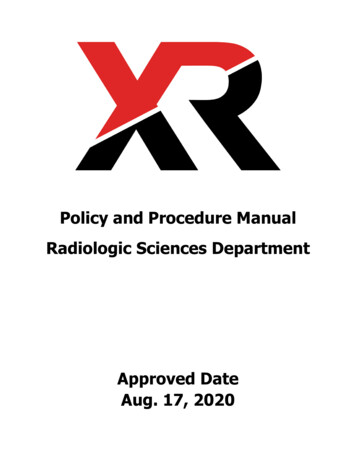
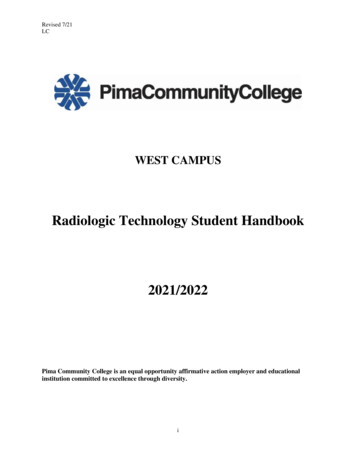
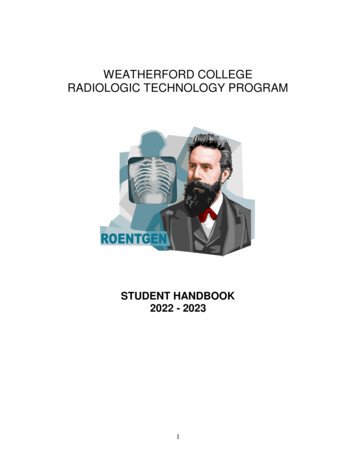
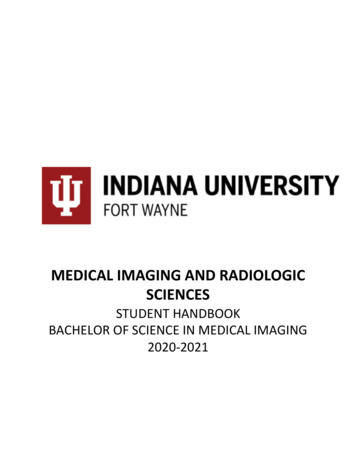
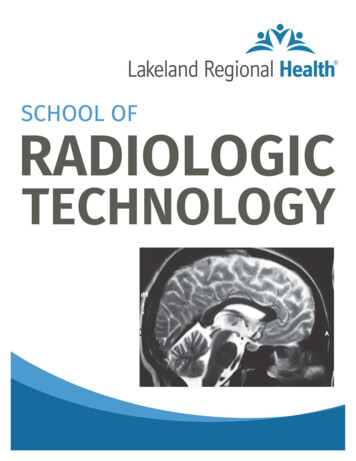
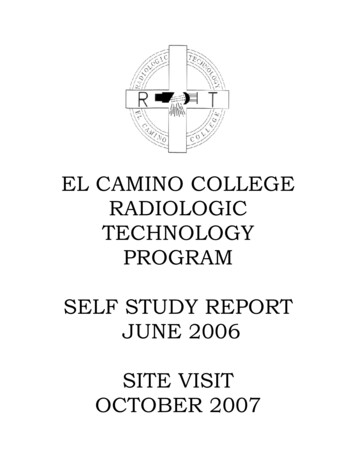

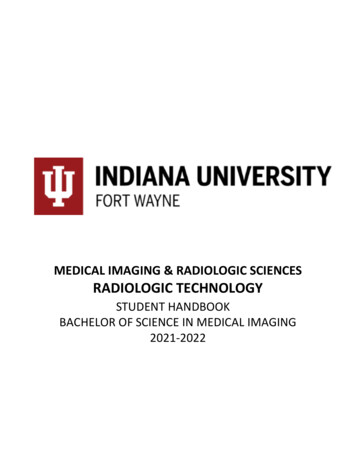
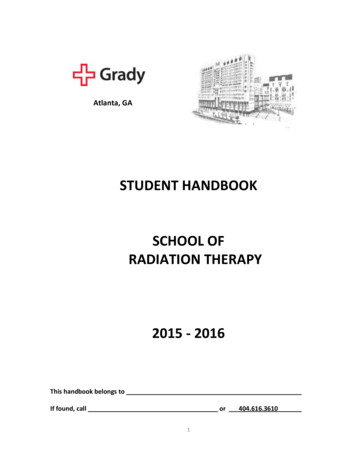
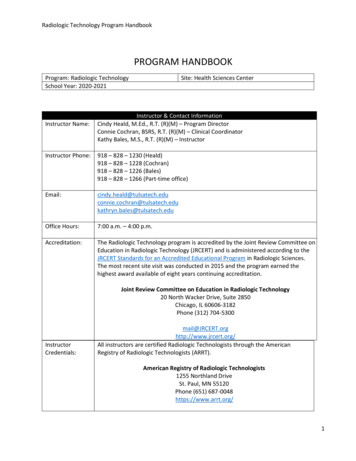
![Radiologic Technology Program Presentation[1] (Read-Only)](/img/15/radiologic-20technology-20program-20presentation.jpg)